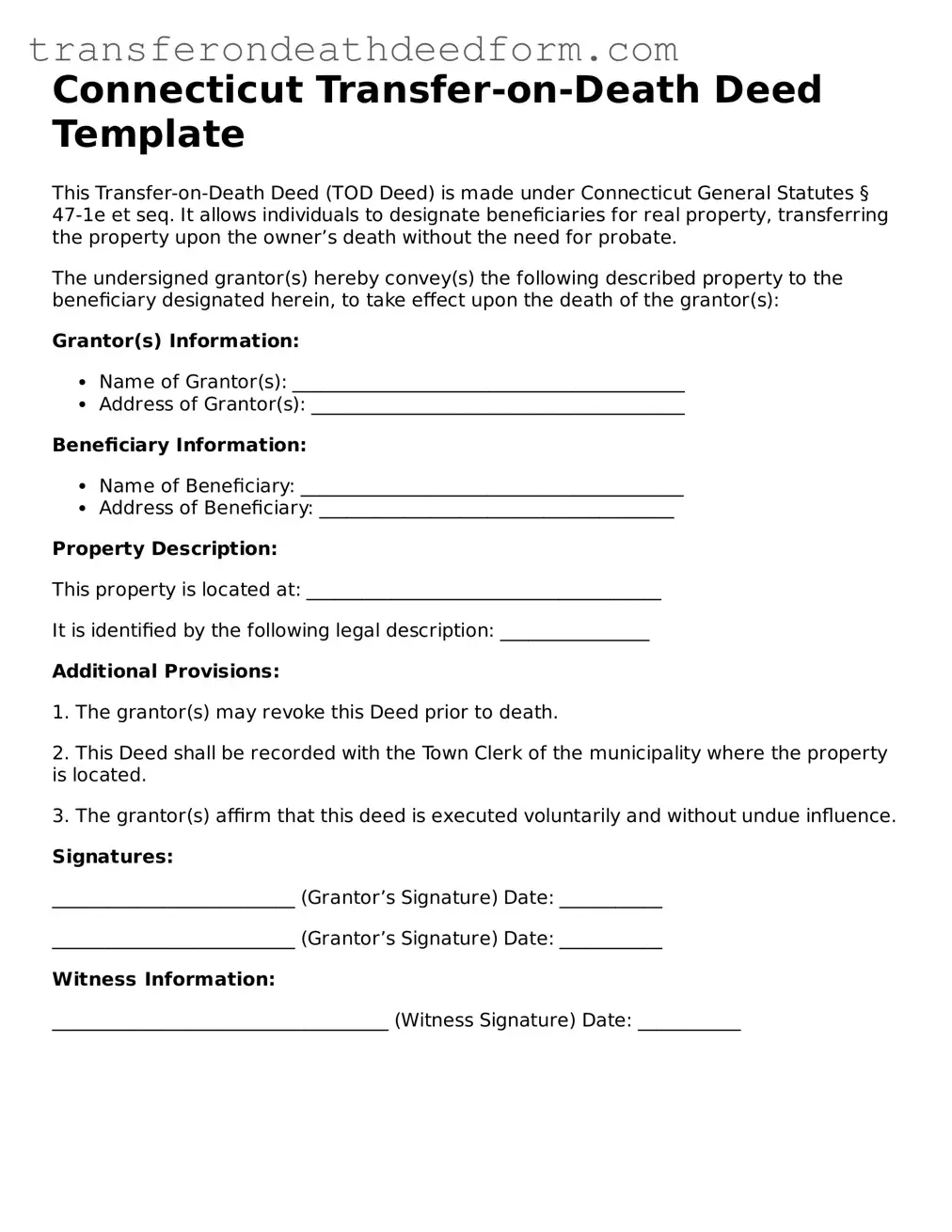Connecticut Transfer-on-Death Deed Template
This Transfer-on-Death Deed (TOD Deed) is made under Connecticut General Statutes § 47-1e et seq. It allows individuals to designate beneficiaries for real property, transferring the property upon the owner’s death without the need for probate.
The undersigned grantor(s) hereby convey(s) the following described property to the beneficiary designated herein, to take effect upon the death of the grantor(s):
Grantor(s) Information:
- Name of Grantor(s): __________________________________________
- Address of Grantor(s): ________________________________________
Beneficiary Information:
- Name of Beneficiary: _________________________________________
- Address of Beneficiary: ______________________________________
Property Description:
This property is located at: ______________________________________
It is identified by the following legal description: ________________
Additional Provisions:
1. The grantor(s) may revoke this Deed prior to death.
2. This Deed shall be recorded with the Town Clerk of the municipality where the property is located.
3. The grantor(s) affirm that this deed is executed voluntarily and without undue influence.
Signatures:
__________________________ (Grantor’s Signature) Date: ___________
__________________________ (Grantor’s Signature) Date: ___________
Witness Information:
____________________________________ (Witness Signature) Date: ___________
